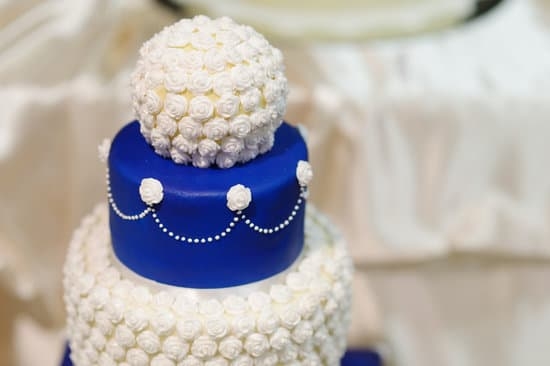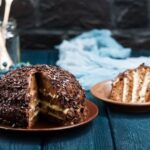Creating unique and eye-catching cake decorations often requires thinking outside the box, or in this case, outside the bakery. One way to elevate your cake decorating game is by using edible sand, a versatile ingredient that adds texture and visual interest to your creations. In this article, we will dive into the world of edible sand for cake decorating, and more specifically, teach you how to make sand for cake decorating right in your own kitchen.
Edible sand offers a fun and creative way to add depth and dimension to your cakes, whether you’re aiming for a beach-themed masterpiece or simply looking to incorporate some interesting textures. By making your own edible sand, you not only have control over the ingredients used but also have the freedom to customize it according to your preferences. Plus, creating edible sand at home can be more cost-effective than purchasing pre-made versions from stores.
In the following sections, we will explore the different ingredients needed to make edible sand, such as cookies, crackers, sugar, and food coloring. Additionally, we will discuss the equipment required for creating this versatile cake decorating element. So get ready to roll up your sleeves and unleash your creativity as we walk you through the steps of making edible sand for your next baking project.
Ingredients Needed
When it comes to cake decorating, having the right materials on hand can make all the difference. One fun and versatile element to add to your decorating arsenal is edible sand. Making your own edible sand not only allows for more creativity and customization, but it can also be more cost-effective than buying pre-made versions. In this section, we will detail the different ingredients needed to create your own edible sand for cake decorating.
Cookies
One of the main ingredients in edible sand is cookies. You can use any type of crispy cookie, such as graham crackers, vanilla wafers, or even shortbread cookies. These cookies will serve as the base for your sand mixture, providing a delicious flavor and crunchy texture.
Sugar
To help bind the crushed cookies together and add sweetness to your edible sand, you will need sugar. Granulated sugar works best for this purpose, but you can also experiment with powdered sugar for a finer texture.
Food Coloring
Food coloring is essential for giving your edible sand that realistic sandy appearance. You can use traditional brown food coloring for a classic look, or get creative with different colors like blue or pink for themed cakes. Make sure to use gel food coloring for vibrant results without altering the texture of the edible sand.
By combining these key ingredients in the right proportions, you can create a customizable and delicious edible sand that will take your cake decorating to the next level. Stay tuned for the next section where we will discuss the equipment needed to turn these ingredients into a beautiful sandy masterpiece.
Equipment Needed
When it comes to creating edible sand for cake decorating, having the right tools and equipment is essential to achieve the perfect texture and consistency. Here is a list of items you will need to create your own edible sand:
- Food Processor: A food processor is an essential tool for crushing and blending the ingredients into a fine sand-like texture.
- Rolling Pin: You will need a rolling pin to crush cookies or crackers into smaller pieces before further processing.
- Baking Tray: A baking tray will be used to spread out the crushed ingredients evenly for drying in the oven.
- Parchment Paper: To prevent the ingredients from sticking to the baking tray, use parchment paper as a non-stick surface.
- Food Coloring: Depending on the color you want your edible sand to be, have food coloring on hand to add a pop of vibrancy.
Having these tools readily available will make the process of creating edible sand smoother and more efficient. Don’t worry if you don’t have all the exact items listed above – improvising with similar kitchen tools can also work just fine.
Creating your own edible sand for cake decorating doesn’t have to be complicated when you have the right equipment at your disposal. With a food processor, rolling pin, baking tray, and other mentioned items, you are well-equipped to start crafting unique textures for your next cake masterpiece.
Whether you are aiming for a sandy beach theme or looking to add depth and dimension to fondant designs, having edible sand in your decorating arsenal opens up endless creative possibilities. Experiment with different colors and flavors using these tools and watch your cakes come to life with added texture and visual appeal.
Step-by-Step Instructions
To create edible sand for cake decorating, you will need to follow a simple step-by-step process that involves crushing the ingredients, mixing in food coloring, and drying them out. This unique and versatile ingredient can add texture and creativity to your cakes, making them stand out from the rest. Here is a detailed guide on how to make your own edible sand for your next cake decorating project.
Crushing the Ingredients
The first step in making edible sand is to gather your chosen ingredients like cookies, crackers, or sugar-based items. Using a food processor or a rolling pin, crush these ingredients into a fine powder or crumb-like consistency. The texture of the sand will depend on how finely you crush the ingredients, so adjust accordingly based on your desired result.
Mixing in Food Coloring
Once you have achieved the desired texture for your edible sand, transfer it to a bowl and mix in food coloring to achieve the color you want. You can experiment with different shades to match the theme of your cake decorating project – whether it be a sandy beach or a vibrant tropical paradise. Make sure to mix the food coloring thoroughly throughout the sand to ensure an even distribution of color.
Drying Them Out
After mixing in the food coloring, spread out the colored edible sand onto a baking tray lined with parchment paper. Allow the sand to dry out completely before incorporating it into your cake decorating design. This step is crucial to prevent any moisture from affecting the texture of your edible sand. Once dried, store it properly until ready for use on your creative cake creations.
By following these step-by-step instructions on how to make edible sand for cake decorating, you can elevate your cakes with unique textures and colors that will impress both visually and taste-wise. Experiment with different flavors and colors to create one-of-a-kind designs that will surely wow your friends and family at any celebration.
Tips for Success
Creating edible sand for cake decorating can be a fun and innovative way to add texture and aesthetic appeal to your baked creations. With just a few simple ingredients and some helpful tips, you can easily make your own customized edible sand at home. In this section, we will explore some essential pointers to guarantee that your edible sand turns out perfectly every time.
To ensure the success of your edible sand-making process, consider the following tips:
- Adjusting Consistency: Depending on the desired texture and appearance of your edible sand, you may need to adjust the consistency of the ingredients. Experiment with different ratios of cookies, crackers, or sugar to achieve your preferred sandy look.
- Food Coloring Techniques: Incorporating food coloring is a crucial step in giving your edible sand its vibrant color. To create various shades or mimic different types of sand (e.g. white beach sand or colored rainbow sand), experiment with different food coloring techniques like mixing colors or layering them.
- Enhancing Flavors: While traditional edible sand recipes often use plain cookies or crackers for the base, don’t hesitate to explore unique flavor combinations. Consider adding ingredients like cinnamon, cocoa powder, or flavored sugar to enhance the taste profile of your edible sand.
By fine-tuning these aspects of the edible sand-making process and embracing creativity in flavor and color choices, you can elevate your cake decorating projects with personalized and visually stunning edible sand creations. Experimentation is key in finding what works best for your specific design ideas and preferences – so don’t be afraid to think outside the box.
Creative Uses
When it comes to cake decorating, the possibilities are truly endless. One creative and unique way to take your cakes to the next level is by incorporating edible sand into your designs. Edible sand adds a fun and textured element to your creations, making them visually appealing and adding a touch of whimsy.
But how do you make sand for cake decorating? Making your own edible sand can be a cost-effective and customizable option that allows you to tailor the color, flavor, and texture to suit your specific needs.
To create edible sand for cake decorating, you will need a few key ingredients such as cookies, crackers, sugar, and food coloring. By using these simple items, you can achieve a sandy texture that is perfect for beach-themed cakes or adding dimension to fondant designs.
The process involves crushing the cookies and crackers into fine crumbs using a food processor or rolling pin. Adding in sugar gives the mixture sweetness while food coloring can be used to create different shades of sand.
Experimenting with different flavors and colors can elevate the look of your cakes and bring your creative vision to life. Whether you want to recreate a tropical paradise with golden sands or add a splash of color with rainbow-hued sand, the possibilities are endless.
Edible sand not only adds visual interest but also provides depth and texture to your cake designs. So why not try making your own edible sand for your next cake decorating project and let your imagination run wild.
Storage and Shelf Life
When it comes to cake decorating, edible sand is a versatile and unique element that can add texture and creativity to your designs. Making your own edible sand can be a cost-effective and customizable alternative to store-bought options.
Not only can you control the ingredients used, but you can also tailor the color and flavor to suit your specific needs. In this section, we will explore how to store and preserve edible sand for future use, ensuring it stays fresh and ready for your next decorating project.
To maintain the freshness and longevity of your homemade edible sand, it is important to store it properly. Once you have created the edible sand using the desired ingredients and food coloring, transfer it to an airtight container. Make sure the container is clean and dry before adding the edible sand. Seal the container tightly to prevent air exposure, which can lead to staleness or loss of flavor over time.
For optimal shelf life, store the airtight container of edible sand in a cool, dark place away from direct sunlight or heat sources. Excessive heat or moisture can cause the edible sand to clump together or lose its texture.
By storing it in a cool environment, you can extend the freshness of the edible sand for weeks or even months. Remember to label the container with the date of creation so that you can keep track of its shelf life and ensure you use it before any potential expiration date.
In addition to proper storage, another way to maximize the shelf life of your homemade edible sand is by avoiding contamination. Make sure your hands are clean before handling the edible sand or transferring it into storage containers. Any exposure to moisture or bacteria from unwashed hands can compromise the quality of the edible sand and lead to spoilage. By taking these simple steps, you can enjoy fresh and vibrant edible sand for all your cake decorating needs.
Conclusion
In conclusion, learning how to make sand for cake decorating can truly elevate your baking game and add a unique touch to your creations. By following the simple steps outlined in this article, you can create edible sand that is not only cost-effective but also highly customizable to suit your specific design needs.
With just a few basic ingredients like cookies, crackers, sugar, and food coloring, along with some essential tools like a food processor and rolling pin, you can easily whip up a batch of edible sand that will take your cakes to the next level.
Experimenting with different flavors and colors can give you endless possibilities when it comes to incorporating edible sand into your cake decorating projects. Whether you want to create a beach-themed masterpiece or simply add some texture to your fondant designs, edible sand can be a versatile and fun element to work with. By following the tips provided and adjusting the consistency to your liking, you can ensure that your edible sand turns out perfectly every time.
So why not give it a try? Take this opportunity to get creative in the kitchen and impress your friends and family with beautifully decorated cakes using your very own homemade edible sand.
Not only will you save money by making it yourself, but you’ll also have full control over the flavors and colors, making each creation truly unique. So roll up your sleeves, gather your ingredients, and start making some delicious edible sand for your next cake decorating project.
Frequently Asked Questions
How Do You Make Sand for Cake Decorating?
Making sand for cake decorating involves a few simple steps. You can use graham crackers, cookies, or digestive biscuits to create the sandy texture. Simply crush them into fine crumbs using a food processor or rolling pin.
What Can I Use for Fake Sand on a Cake?
When looking for a substitute for real sand on a cake, there are several options available. Crushed vanilla wafers, finely ground nuts, or even brown sugar can be used to mimic the look of sand. These alternatives are edible and safe for consumption.
What Is Edible Sand Made Of?
Edible sand is typically made from ingredients like crushed cookies, graham crackers, or cereal such as Rice Krispies. These components are ground into fine crumbs to resemble the texture of real sand. Food coloring can also be added to achieve different shades if desired.

Welcome to our cake decorating blog! My name is Destiny Flores, and I am the proud owner of a cake decorating business named Cake Karma. Our mission is to provide delicious, beautiful cakes for all occasions. We specialize in creating custom cakes that are tailored specifically to each customer’s individual needs and tastes.





